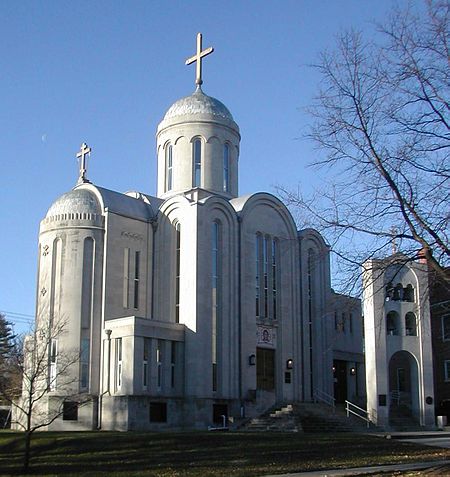Orthodox Church in America Archdiocese of Washington
Christian organizations established in 1981Christianity in DelawareChristianity in VirginiaDioceses established in the 20th centuryDioceses of the Orthodox Church in America ... and 3 more
Eastern Orthodox organizations established in the 20th centuryEastern Orthodoxy in MarylandEastern Orthodoxy in Washington, D.C.

The Archdiocese of Washington is a diocese of the Orthodox Church in America (OCA). Its territory includes parishes, monasteries, and missions located in Washington, D.C., southern Delaware, Maryland and Virginia. From 2005 to July 1, 2009, it was known as the Diocese of Washington and New York, until the Diocese of New York and New Jersey was reestablished as a separate diocese. The archbishop of Washington is Metropolitan Tikhon (Mollard), who is also the OCA's ruling primate.
Excerpt from the Wikipedia article Orthodox Church in America Archdiocese of Washington (License: CC BY-SA 3.0, Authors, Images).Orthodox Church in America Archdiocese of Washington
Georgetown Pike,
Geographical coordinates (GPS) Address Phone number Website Nearby Places Show on map
Geographical coordinates (GPS)
| Latitude | Longitude |
|---|---|
| N 38.9504 ° | E -77.1782 ° |
Address
Saint Luke Serbian Orthodox Church
Georgetown Pike 6801
22101
Virginia, United States
Open on Google Maps






